When it comes to garlic – to the occasional detriment of my breath – I've always been a believer that you can never have too much.
For as long as I can remember, I've always been a garlic lover. I'm always looking for a good way to incorporate it into every meal.
And fortunately for me (and you, dear reader), garlic is more than just a tasty addition to a meal. Due to its nutrient-rich composition and antibacterial properties, garlic comes with a lot of exciting health benefits.
In this post, I'll take you through the world of garlic: from its components to its benefits... and even to its downsides.
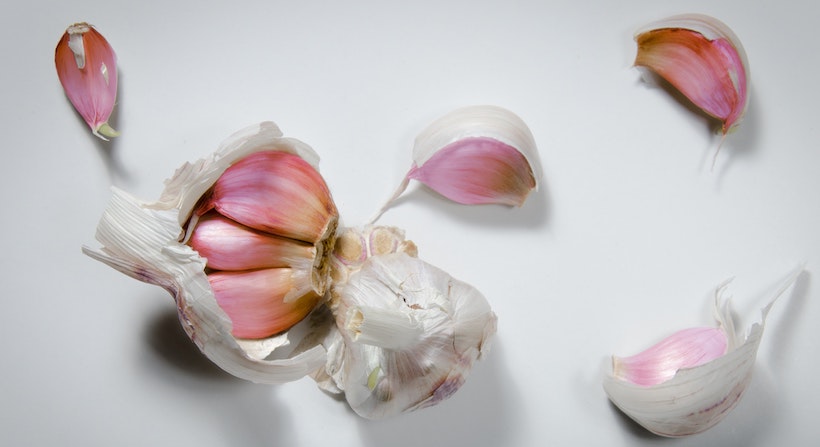
Garlic comes from the Allium sativum plant, which makes it technically a part of the onion family. As a result, some of its closest relatives include onions, shallots, chives, and leeks.
While it now grows all over the world, garlic is originally native to northeastern Iran and Central Asia. It spread quickly through early trade routes and is now enjoyed on just about every continent. Deservedly, too – it's an easy enough vegetable to grow at home (if you're so inclined).
Today, one of the largest garlic landmarks is near me in the Gilroy, CA town, which touts itself as "The Garlic Capital of the World."
(And yes, you really can smell the garlic from the highway!)
Thanks to cuneiform tablets found in ancient Mesopotamia, we know that humans have been growing garlic for at least four thousand years. Two of the first major producers of garlic were ancient Egypt and ancient China. Garlic has been found in the tombs of the Egyptian pharaohs, as well as in ancient Greek and Roman cultural records and ruins.
While the first forms of garlic must have been small, relatively inedible plants, many different varieties have evolved over the years – helped along by human farming. Each new variety reflects the priorities and the growing conditions of each individual location, but all are still unmistakably garlic.
Unsurprisingly, humans have been eating garlic for just about as long as they've been able to find it, which means human consumption of garlic dates back to around 2000 B.C.E. The tomb of Tutankhamen contained some well-preserved garlic, and historical records indicate that it was enjoyed by people of all classes in ancient Greece, Rome, China, and Africa.
From the Middle Ages onward, garlic became increasingly valued both for its medicinal properties and for its delightfully pungent taste. The first World War had become an important ingredient in many cuisines as well as a powerful tool in medicine.
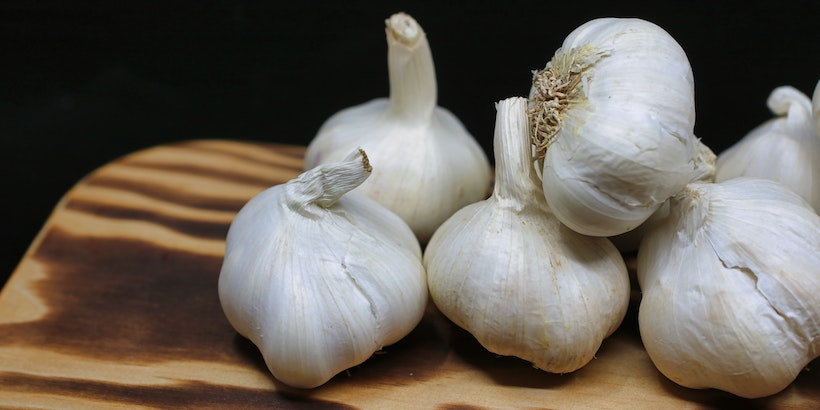
Like most root vegetables, garlic grows beneath the soil until it's ready for the harvest. Garlic takes a lot longer to grow than most home garden plants do—around nine months—but once it's fully mature, garlic harvesters carefully pull the bulbs out of the earth.
Once harvested, garlic is "cured". This means that it needs to hang in a warm, dry place with plenty of airflow and not too much direct heat or sunlight. Garlic cures for a few weeks until it becomes hard to the touch and dry on the outside.
After that, it's ready to use in cooking!
Garlic crops up in just about every cuisine around the world. In East Asian recipes, garlic is often used to flavor the oils found in stir fry dishes, as well as just as a regular seasoning. In Central and South American recipes, garlic and onions are commonly paired to lend a bit of an extra kick to a dish.
In Central African cuisine, garlic is usually mixed with rice, grain, or other starches to provide a hearty base for many meals, and in European recipes, it's used to add just a little extra spice to sauces, soups, and spreads.
Garlic shines in just about any recipe, but it has uses outside of the culinary arts.
As early as AD 23, Pliny the Elder wrote extensively about garlic's medicinal properties. By 1025, the Persian philosopher, astronomer, physician, and author Avicenna recommended garlic for a wide variety of common ailments. By World War I, garlic was one of the most effective tools for fighting infection and sepsis in the trenches of the Western Front.
Beyond medicinal and culinary import, garlic also plays a major role in many cultural practices. The Persian New Year is often celebrated with garlic dishes.
And of course – we all know that garlic is essential for scaring off vampires!
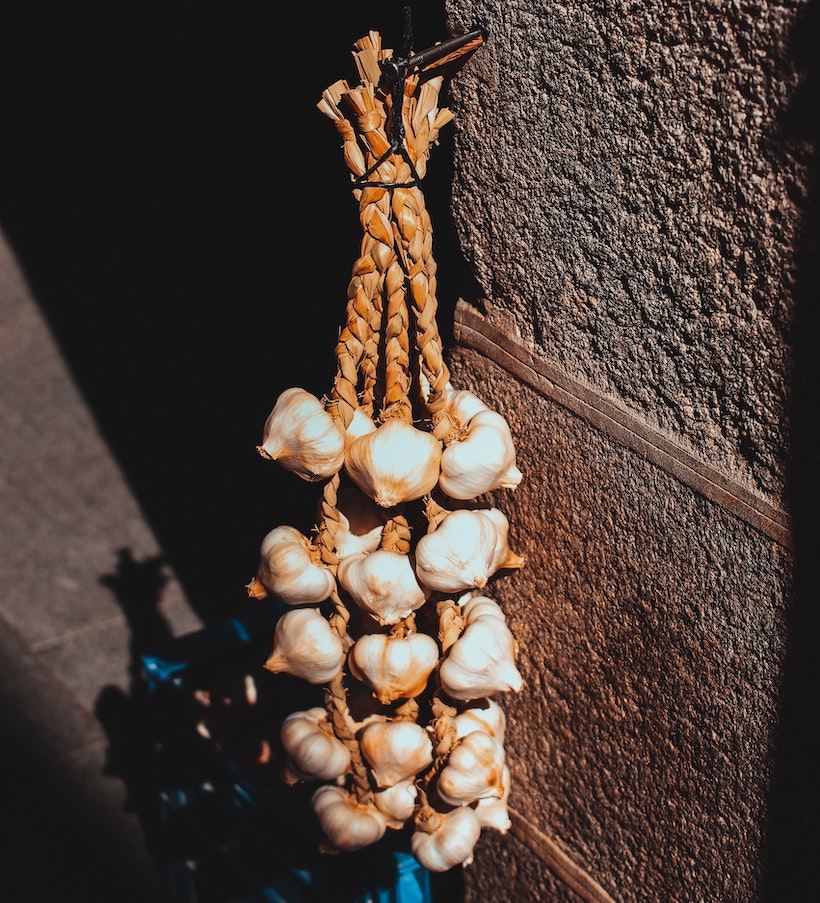
Most of the health benefits found in garlic come from a few key compounds that make up each clove.
Sulfur compounds dominate, especially allicin. Allicin is one of the main sulfur compounds found in garlic and has been repeatedly shown to exhibit powerful antibacterial and antimicrobial properties.
Saponins and flavonoids are bioactive compounds that naturally occur in many different types of plants (including garlic), and are great anti-inflammatory agents. They also are strong antioxidants, which work against free radicals in your body which can cause cell and DNA damage.
The most common vitamins found in garlic are vitamins C and B6. Vitamin C helps boost the immune system and assists in the maintenance of bones, muscles, and blood vessels while also supporting the body's ability to absorb iron. Vitamin B6 helps the body break down carbs and proteins, and also aids in the production of neurotransmitters, enzymes, insulin, and both red and white blood cells.
Garlic is loaded with useful minerals. A study of different foods commonly eaten in Bolivia shows that a garlic-rich diet provides lots of iron, zinc, and calcium. As for primary effects – iron gives you healthier blood, zinc promotes a healthier immune system, and calcium promotes healthier bones.
In terms of macronutrients, most of the calories (around 85.3 percent) found in garlic come from carbohydrates. After that, a slightly lower amount (about 11.9 percent) of each garlic clove contributes to your daily protein intake, and an even smaller amount (2.8 percent) is fat.
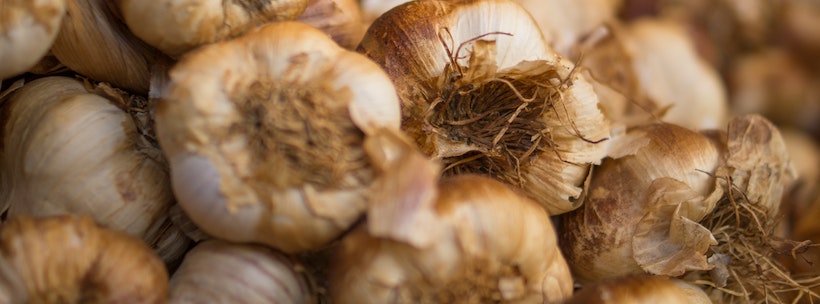
Initial studies have shown that garlic has strong anti-lipid properties. This means that a diet rich in garlic can actually significantly reduce the amount of cholesterol found in the bloodstream.
Because too much cholesterol is a hallmark of the western world, eating garlic might help you stave off one of the most common and dangerous conditions affecting modern society.
In addition to lowering your risk of heart attack, a garlic-heavy diet can help protect against a wide range of very serious cardiovascular diseases.
The aerodigestive tract is made up of the "upper digestive" organs – the esophagus and muscles that control swallowing, as well as the respiratory organs like the lungs and the larynx. Cancers that take root in these organs can have a devastating impact on your ability to live a normal life, even with successful treatment.
Studies show that garlic (and its cousin the onion) can help protect your throat, lungs, and airway against the formation of cancers in this area. Other vegetables in the Allium family almost certainly have similar properties. Still, none of them pack the anti-carcinogenic power that garlic manages to contain in such a relatively small package.
Another type of cancer that affects one out of every six men is prostate cancer. While the recovery rate of this particular cancer is high – and treatment is usually effective – it's still a painful, uncomfortable health condition that can have a severe impact on the way you live your life.
While studies linking garlic and prostate cancer prevention are not as prevalent as those linking garlic and aerodigestive cancer prevention, the evidence is starting to stack up. This stinky spice is a powerful tool in fighting prostate cancers in men of all ages because of the amounts of allicin and other antimicrobial or anti-inflammatory compounds.
As we get older, our blood vessels grow stiffer and more brittle. While this is a natural part of the aging process, the foods we eat can either accelerate or slow down this unfortunate side effect of growing up.
Stiff or brittle blood vessels can lead to a wide variety of health complications, but the vessels and valves around the heart are instrumental in preventing—or causing—cardiovascular conditions.
Regular garlic intake can help slow down or even prevent the stiffening of the valves and arteries that supply blood directly to the heart. These younger, more flexible valves can help protect your heart against common cardiovascular diseases as you mature.
Another fairly common—but still very scary—side effect of aging is the risk of dementia development, most often in the form of Alzheimer's. Nearly 5.8 million Americans have Alzheimer's today, and the proportion doesn't seem likely to shrink anytime soon.
Unfortunately, garlic may not be able to do much to treat Alzheimer's after it's been diagnosed. However, studies show that the same anti-stiffening compounds that make garlic great for your cardiovascular system can also significantly improve brain elasticity.
This effect makes your brain less likely to develop conditions like Alzheimer's or diseases that attack the brain's rigid, brittle parts.

Unfortunately, colds and flu viruses are a pretty common phenomenon in most of our daily lives. For most of us, the common cold is an inconvenient, uninvited visitor that takes a lot of the energy out of our day and leaves us feeling cranky and miserable.
While there is no cure for the common cold, garlic can help reduce symptoms and the runtime of this annoyingly omnipresent condition. If you think you're feeling the signs that a cold is on the way, try taking some garlic in your next meal – or even taking garlic pills or supplements. The antibacterial properties found in garlic will reduce the symptoms and duration of common illnesses like the cold or the flu.
For most of human history, we've known that garlic can help fight off disease and infection. It wasn't until recently that we've been able to unpack the medical and scientific reasons behind garlic's super-strength. A 2001 article in Applied Microbiology and Biotechnology suggests that the secret to garlic's disease-fighting powers may lie in its sulfur compounds—specifically, allicin.
Allicin is one of the main ingredients that help garlic reduce the risk of microbial or viral infection. If you're worried about catching a viral infection, garlic may not be able to guarantee your safety completely, but it might go a long way towards helping keep you healthy.
Hypertension, or high blood pressure, is a condition in which the pressure on your body's main blood vessels increases to a dangerous level and dramatically increases the risk of heart disease or stroke.
We've already seen that garlic can help reduce blood vessel stiffness, which in turn lowers the body's overall blood pressure, but it can do a lot more than that to prevent hypertension. In addition to reducing artery stiffness, garlic can thin out the blood, which reduces the pressure on your cardiovascular system. The B vitamins found in garlic further help reduce negative cholesterol, which reduces blood pressure and improves your overall blood health.
One of the most significant drawbacks to any outdoor activity is the potential for picking up pests. Aside from leaving painful, itchy bites, ticks carry several severe diseases, including Rocky Mountain Spotted Fever and Lime Disease.
Fortunately, garlic's got your back (and your legs) on this front, too!
The same antimicrobial properties that make garlic a powerful internal medicine can also help to drive away ticks and other parasitic insects that would otherwise love to snack on your blood.
(It's even been jokingly suggested that this anti-parasite power may be the inspiration behind garlic's fabled ability to drive away the most famous folklore parasites of all—vampires!)
If you've been feeling the need to work out lately—but hate the fatigue and exhaustion that comes with it—garlic may be your new best friend. A 2007 study shows that garlic may have anti-fatigue properties that can help you work out longer, harder, and safer.
We've already seen how garlic can help improve blood flow and reduce swelling, so it only makes sense that a steady diet rich in garlic can help boost your body's ability to move oxygen quickly through the bloodstream. As a result, your limbs will feel less exhausted, and you'll maintain high blood oxygenation levels throughout your workout.
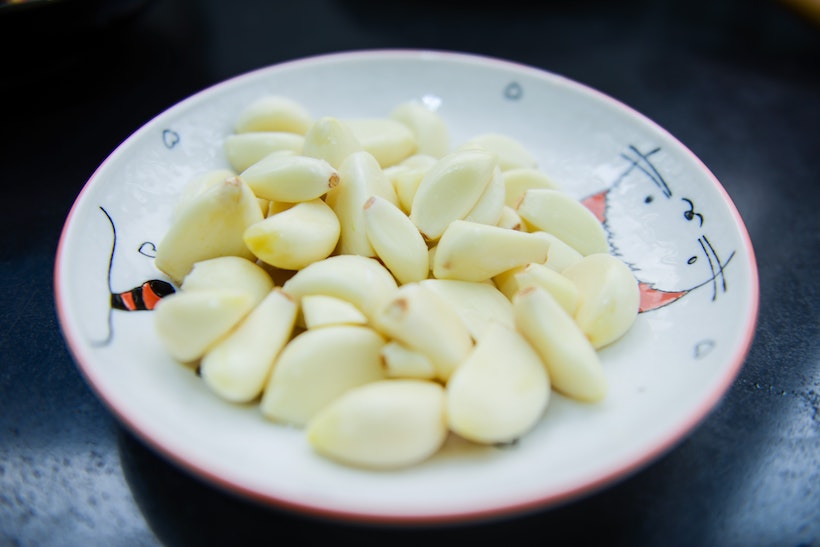
While the health benefits packed into each clove of garlic are pretty impressive, with everything you eat, there is always the potential for adverse side effects.
Most people already know that overeating garlic—especially raw garlic—can lead to some pretty powerful halitosis or bad breath.
Also, eating a lot of garlic can lead to a garlicky smell in an individual's body odor, which some folks – and people around them – might find unpleasant.
Beyond that, garlic can be dangerous for cats and dogs. The component thiosulfate is hard to digest for our furry friends, and large doses can hurt or even kill our pets.
In small doses, they might get some of the same health benefits that humans enjoy, but too much can be potentially toxic. According to some reports, it's also additive – getting into a garlic meal a few days in a row could be disastrous.
Be careful with garlic around your pets.
For humans, there's always the risk that garlic may interact negatively with any drugs that your doctor has prescribed. As you saw in the benefits section, garlic is a blood thinner. If you're taking any anticoagulants or blood thinners (or even thickeners) to help with your blood pressure, too much garlic may put you at risk for dangerous amounts of bleeding or otherwise mess with your dosage.
Garlic also interacts negatively with medications prescribed to treat HIV/AIDS and other autoimmune disorders. Because it breaks down the medication faster, too much garlic can reduce the effectiveness of these drugs and leave the symptoms still unchecked.
In the same way, garlic can reduce the effectiveness of common medications, including antibiotics and calcium channel blockers. Even birth control pills can see a slight dip in effectiveness when combined with too much garlic every day.

So is garlic good for you? The answer, for the most part, is a resounding yes. The many health benefits that this aromatic plant provides far outweigh the risk of any potentially harmful side effects.
If you're already on some of the medications listed above, you can generally still enjoy a light garlicky snack! However, be careful to enjoy it in moderation. Check with your primary care physician if you notice any changes in the way that you feel.
The same principle holds true for people who aren't on any medication at all. If you find yourself suffering from heartburn or indigestion after eating an overly-garlic-filled meal, you may want to consider cutting back on the stuff and reintroducing it into your diet slowly.
Okay, we all know about the potential for bad breath – but garlic is an amazing addition to almost any dish. On top of that, it's got verifiable beneficial effects in spades.
So, unless you're in one of the categories of folks that should limit the stuff, load it up. You're getting some great health boosts with the improved taste of the meal.
And, oh yeah, you could be fending off vampires as well...
Excellent article, pretty valuable information, well done and keep them coming.....!!!
Wonderful post with some great factual and educational content.
Very helpful and well-written article!